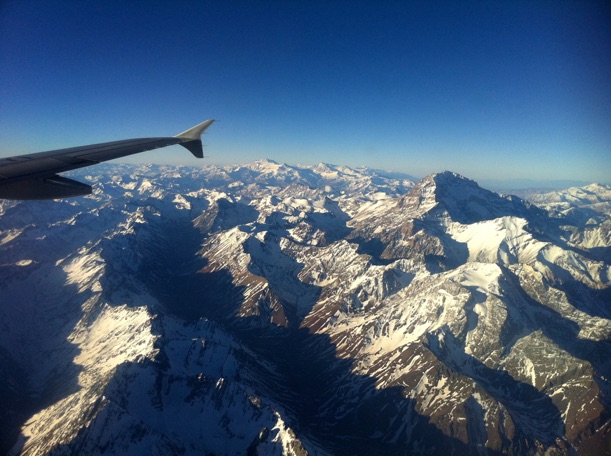Part 18: Uruguay - OXO - The little beef cube with a big story!
Friday, 1 November 2013
Wednesday 30th October:
Uruguay is only a river bridge away from Argentina, but what a difference. Hard to put your finger on it. More modern houses and fuel stations yet horse drawn carts !
Less expensive food but Diesel expensive at just under US$2/Lt, plenty of old 1940/50’s vehicles on the road mixed with all the modern brands and more than 10 Chinese imports.
In Paysandú we started to camp in the town park, unsure we asked a passing couple. He turned out to be the tourist manager and suggested Costa Brava on the Uruguay River about 9kms out of town.

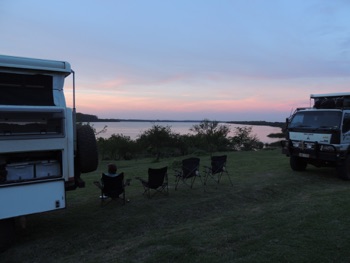
Sometimes things just fall into place.
Camp 364: Camp Ground - New
Aldes Nómade
Cost: Nil
S32* 23.717 W058* 09.317
Today: 234Kms
Trip Total: 112,868Km
Thursday 31st October:
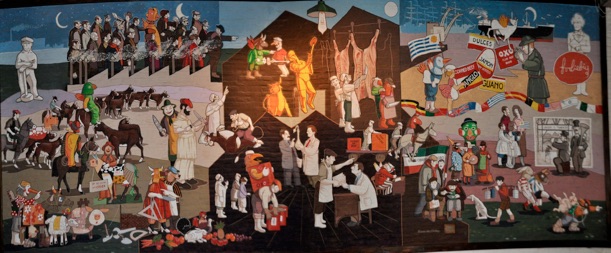
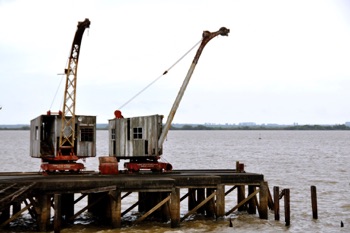
The simple OXO beef cube was made by The Liebig Extract of Meat Company in this remote town.
Below the story of why this place was known as “La Gran Cocina del Mundo”
....The Big Kitchen of the World.
What a great way to end our journey of discovery with this wonderful place.
For those of you who have ever used the humble Oxo cube it all started in this small town here in Uruguay. The towns name is Fray Bentos....... Sound familiar?
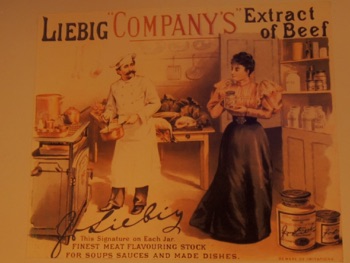
In 1840, Baron Justus Liebig, an organic chemist, developed a concentrated beef extract to provide a cheap and nutritious meat substitute for those unable to afford the real thing. However European meat was too expensive for it to fill that role.
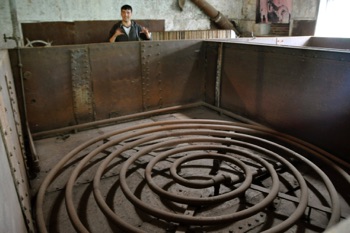
A young man by the name of Nicholas, who could speak good English, took us for a tour.
Above one of 3 huge Vats where the beef was boiled to remove the fat

The Societe de Fray Bentos Giebert & Cie., operated on the banks of the Uruguay River at Villa Independencia, Uruguay, later called Fray Bentos, where the extract was manufactured.
The presses that were used to squeeze the liquid from the meat after boiling.
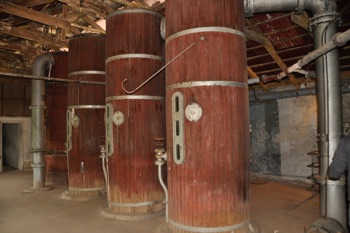
The four concentration vats that then reduced the water content to produce the final product.
The remaining squeezed beef was used in the corned beef production with the addition of salt and fat.
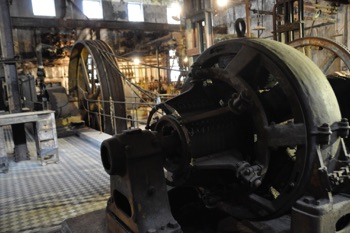
The factory was the first to use electricity in Uruguay, four years before the capital Montevideo.
Left one of four huge steam driven generators.
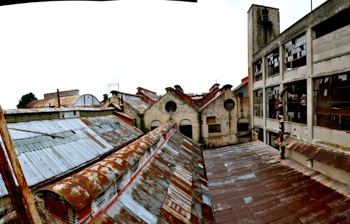
In 1924 Anglo del Uruguay, a UK based company took over the Germany company after Uruguayan Government put pressure on the Germans after the WWI defeat.
The works and yards at Fray Bentos ranked among the largest industrial complexes in South America and helped usher in the industrial revolution there.
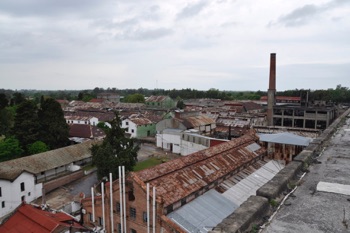
The plant played a major role in the development of Uruguay's cattle sector, which is still one of the country's main sources of export products.
It attracted many European immigrants and, in its heyday, had 5,000 employees, from over 60 countries.
Children as young as 11 years old were also employed.

Every part of the animal was used. Even the hairs on the ears were used as bristles in paint brushes. It is said only the cows ‘Moo’ was not sold.
It takes 3 kg of meat to make 100g of extract. The extract was promoted in Europe as being invaluable not only as a supplement for the malnourished but also in the kitchen. The product enjoyed an immense rise in popularity. By 1875, 500 tonnes of the extract were being produced at the Fray Bentos plant each year. It became a staple in middle-class European households and for soldiers, including the Allied forces of World War II.
During the war, shipments from Uruguay to the Uk were often attacked by German U-Boats such was its supply importance.
European adventurer Henry Stanley took it to Africa when looking for Livingstone, Scott took it to Antarctica, Edmond Hillary to Everest, and Jules Verne wrote it was a necessity for the voyage to the moon.
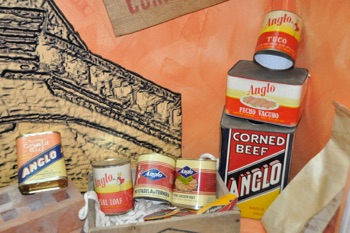
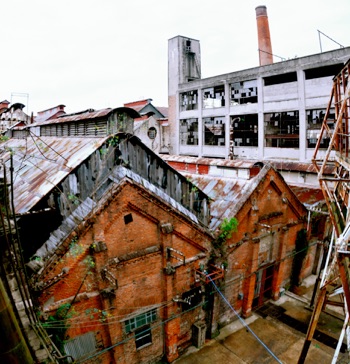
It was truly a fascinating place, basically after closing down in 1979 the government recognised its heritage and kept it as it was. UNISCO is now considering world heritage listing.
The name Fray Bentos is now owned by W.A. Baxters & Sons (UK) and in Australia by Campbell Australia Pty Ltd and both have been selling canned meat pies under that name since 1958.
So there you have it.....the humble beef cube with a big story!
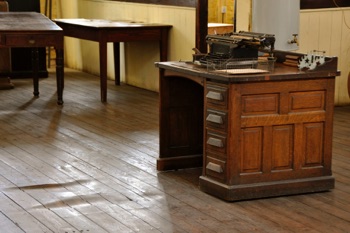
Above is the accountants desk ! He worked here for 47 years and you can see the wear marks in the pine floor.
For more info on Fray Bentos see www.anglo.8m.com
Tonight is Halloween and by chance we camp next to a deserted house, where the howling wind made strange noises in the night !!
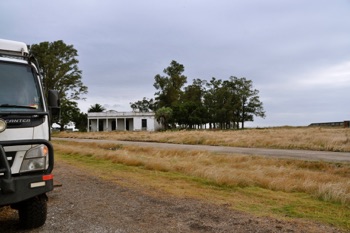
Camp 365: Ghost House Camp
Cost: Nil
S33* 38.091 W057* 41.512
Today: 240Kms
Trip Total: 113,108Km
Friday 1st November:
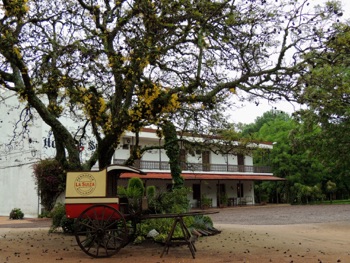
Today we arrived at Nueva Helvecia (Colonia Swuiza) our final destination, and the resting place for our truck for a few months. The rain is bucketing down, not good weather for washing or cleaning.
On Sunday, a bus to Montevideo for our flight home and Christmas with family and friends.
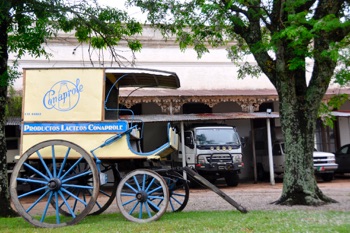
Camp 366: Hotel Swiss: Hotel, Restaurant, Campground, and Vehicle storage - Nueva Helvecia.
Cost: Storage US$2/day
S34* 18.932 W057* 13.871
Today: 103Kms
Trip Total: 113,211Km
www.hotelsuizonuevahelvecia.com
Rolf Raber PH: (00598) 4554 4002
During the last 4 months we have travelled 16,626kms from Panama, through Colombia, Venezuela, Brazil, Argentina and now Uruguay. This brings our travels to over 113,000kms since leaving Australia.
So many friendly people we have met along the way, and our thanks to all of them who have made our journey memorable.
We return in February 2014 to continue our travels in South America.
Cheers
Kym n Lyn
Below the Andes Mountains - Part of what we look forward to driving next year !!
The high mountain is Aconcagua - at 6,962metres it’s second only to Everest.
